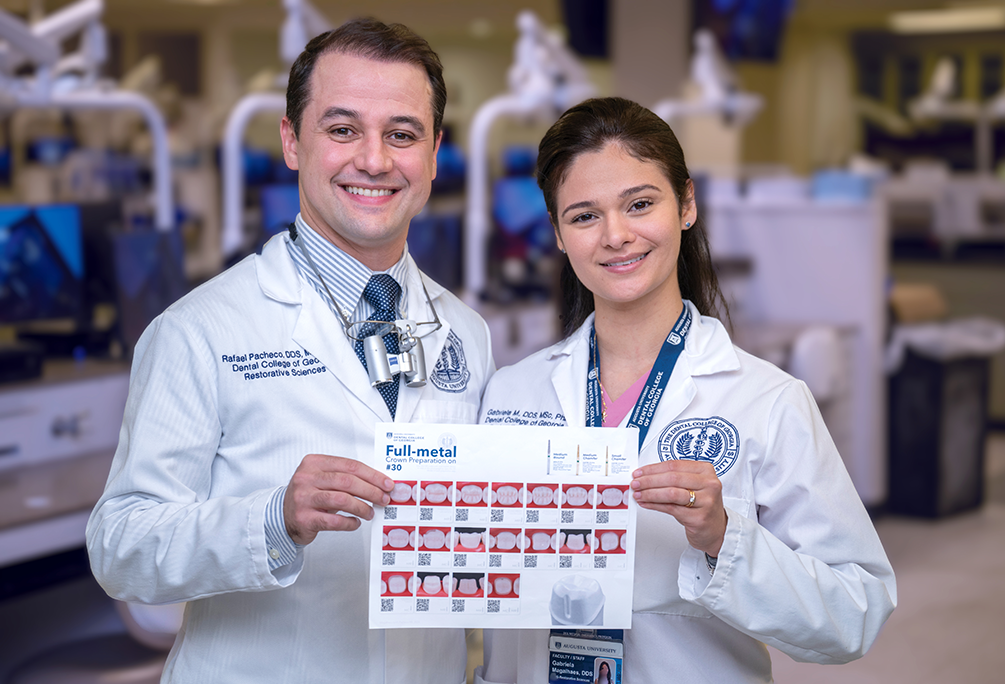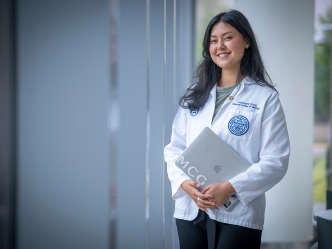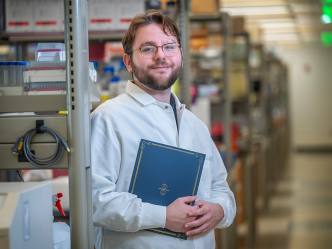To be a good dentist, you have to have a keen eye for detail. You have to be able to perfectly file and shape a tooth for whatever restorative treatment you’re trying to accomplish, or you could cause a new set of problems. Learning how to do this is imperative for a future dentist’s career – and it’s not the easiest thing to teach.
Rafael Pacheco, DDS, PhD, noticed a need for how dental students were learning to prepare teeth for crowns while teaching at the University of Detroit Mercy.
“I was seeing issues with dental education many times when we did demonstrations,” he said.
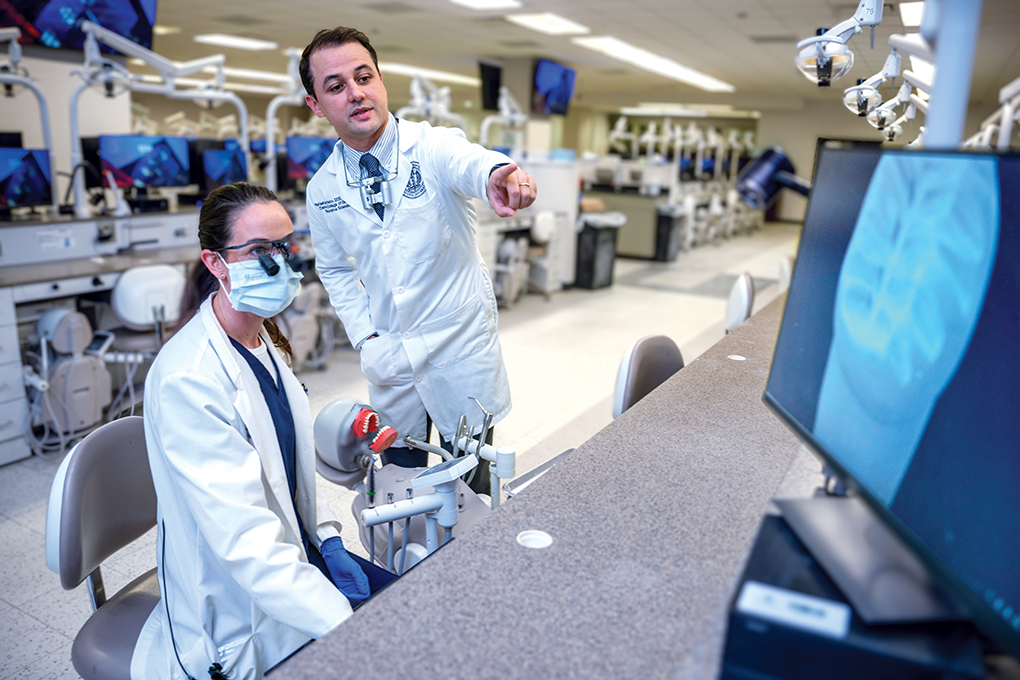
When students are taught how to perform crowns and fillings on teeth, they practice on mannequins with plastic teeth called typodonts before working on human mouths. This often involves the instructor giving demonstrations at the front of the class with a camera projecting their work so students can see.
It’s a highly complex and intricate procedure with nearly microscopic measurements that leave little room for error.
“The problem is these are such abstract concepts in their heads,” said Pacheco, associate professor and interim associate dean for Digital Technologies in the Dental College of Georgia at Augusta University. “Sometimes we’re doing a demonstration like that, and a student is watching the screen and goes to grab an instrument or gets slightly distracted, or they didn’t see the faculty member do the step because there are some physical limitations to showing that. And then they move on to the next step, and they’re like, ‘What was the previous step?’ Or they’re going at a different rhythm than everybody else. I was concerned because I saw that students were not understanding the concept.”
Before Pacheco was a dentist, he was a graphic designer. That experience proved to be useful for his vision in the classroom.
“I thought, what if we created something that allows students to go back to a previous step and see it in 3D and manipulate it in 3D, so they don’t rely on someone showing it on the screen? What if they could view it and check what it’s supposed to look like?” he said.
So he started brainstorming possible ways to make it easier and more comprehensive for students to learn how to prepare teeth for crowns. He wanted clear, high-definition pictures of every step of the process so students could zoom in and see what the tooth is supposed to look like in great detail.
The issue? A picture is static and would only show the tooth from one angle.
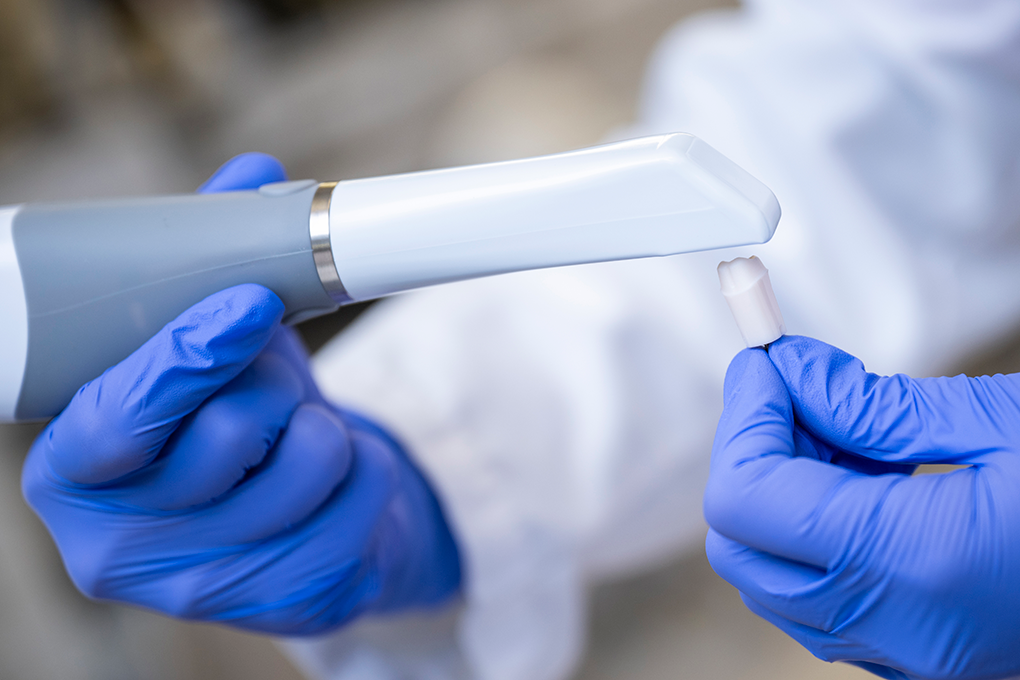
“Now, dental technology has evolved so much. We have intraoral scanners where we can capture 3D images of your mouth and your teeth,” Pacheco said. “So I thought, what if I did one step, took a high-definition picture of that, and scanned that step? Then I do another step, take another photo, scan that step, and do that for all the steps. The students will be able to go back to any step and see the high-definition picture and manipulate the image in 3D on their cell phones or their computers. I’ve never seen anything like that.”
He got to work doing just that – creating a template, taking pictures, scanning each step and creating a pilot manual for his creation.
He then put the 3D images on a web platform so his students could access them on their computers, tablets or cell phones. He also printed out sheets of paper with pictures of what each step should look like, along with a QR code to view the 3D image.
“I made three in Detroit, and they loved it. They sit down and place the manual beside them, and they’re like, ‘OK, what’s my next step?’ And they see what it’s supposed to look like. Everyone was so excited about this – the students and even faculty,” he said.

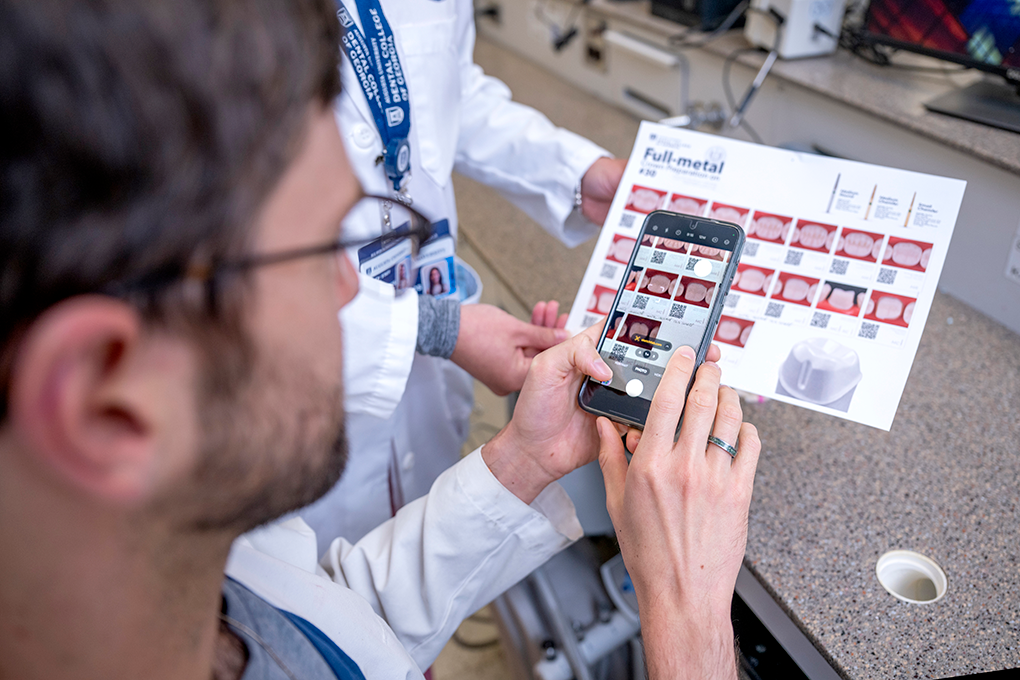
He and a colleague created three manuals and submitted a manuscript about them to the Journal of Dental Education, where they were published last year. They presented their creation at the International Association for Dental Research and American Dental Education Association meetings, and now they’re applying for grants and working to turn the technology into virtual reality.
“It was just a simple idea – like out of the blue – and I said, ‘I don’t think it’s even possible to be done, but let’s try,” he said.
When Pacheco came to DCG at the end of 2022 as a fixed prosthodontics instructor, he realized that the curriculum could also benefit from his invention. He went to the course director and proposed creating the same teaching tool for the first crown preparation that the students do in the course, with the ultimate goal of creating the tools for every other preparation they do.
“The only thing is that it takes time because you have to sit down and make an ideal preparation. You can’t have any mistakes because any mistakes you make, the students will replicate. It takes time to stop, take the picture, scan, export the files, go back and put your mind back into prepping it, ideally,” he explained. “It’s very time-consuming.”
But Pacheco wasn’t without help. His wife, Gabriela Magalhaes, DDS, PhD, is also a DCG faculty member and assisted him with executing his plan.
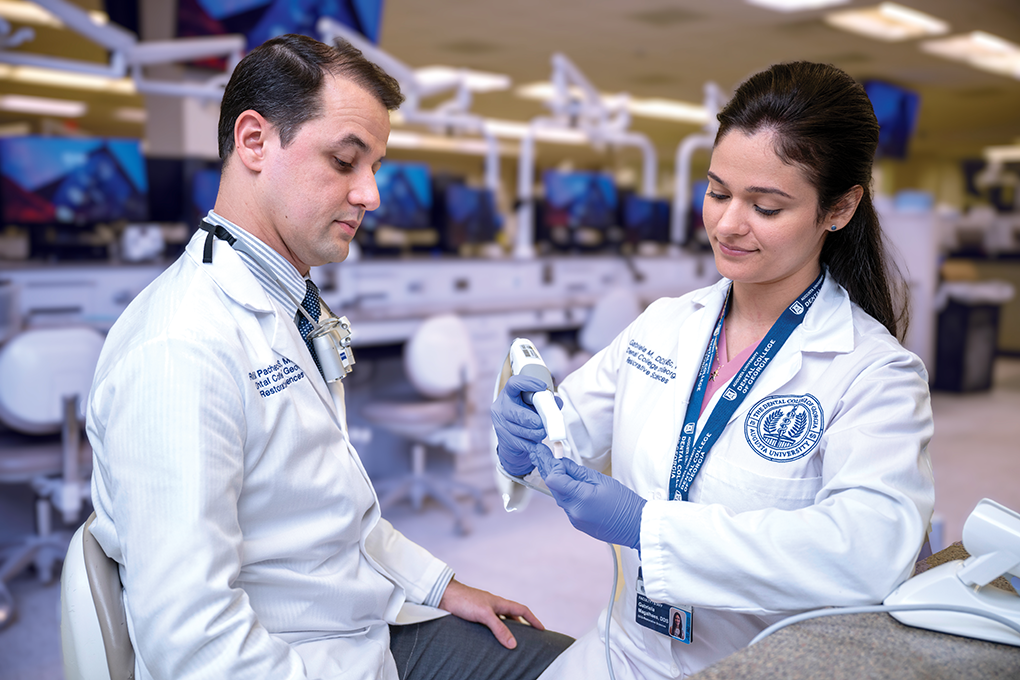
“My first thought was let’s do it – let’s do it now. Because he has so many good ideas, but he doesn’t always have the time to do them,” said Magalhaes, an assistant professor. “He’s very, very good at prepping the tooth. So he did that part, and I scanned it and took pictures for the manual.”
By 2024, Pacheco was ready to print out and create PDF files of the manuals to give to each student in the course. The manuals are similar to the ones he previously published, but they’re upgraded and include what tools the students should be using for each step.
“Let’s say they have the PDF file – they click on it, they have the tooth, they can zoom in, they can move it around, they can rotate it and see it from different views,” he said. “They can have that pulled up on their computer as we’re demonstrating, so they’re seeing in real time what we’re talking about and manipulating that. And they can have that on their cell phones or tablets.”
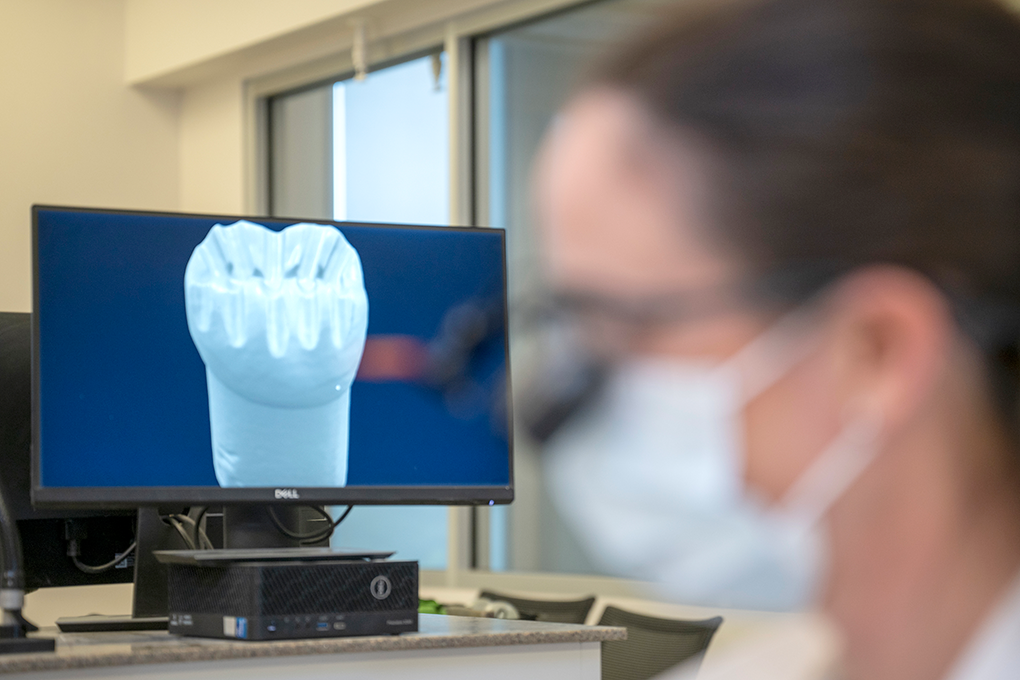
Students who used the tool were quick to praise how it broke down complex lessons and made it easier for them to follow along with instructions.
“I was really excited because a lot of the ways we’re taught is through PowerPoint, and that’s obviously 2D, and dentistry is not 2D, it’s 3D,” said Rachel Dobbs, a second-year DCG student. “So it was really exciting to be able to turn things around and see what a finished product should look like from about every angle you could imagine, as opposed to just pictures, which is kind of the norm.”
Ethan Walden, a second-year DCG student, is the president of the college’s Emerging Technologies and Techniques Club, which focuses on bringing exposure to the latest advancements in the world of dentistry that could make the field more efficient and digitized.
Walden said the goal is to show dental students the gadgets and tools they could work with when they’re licensed professionals, which could bring their practice to the next level.
He thinks that Pacheco’s 3D tool is just what the field needs to give future dentists the best education possible.
“It’s great. I think we are a generation that grew up with digital everything, and we as dental students look at 3D space every single day,” he said. “So it’s nice to be able to have an image right in front of you that you can just rotate and find the small details without having to hold something really, really close. This could be applied to almost every lab-based thing that we teach.”
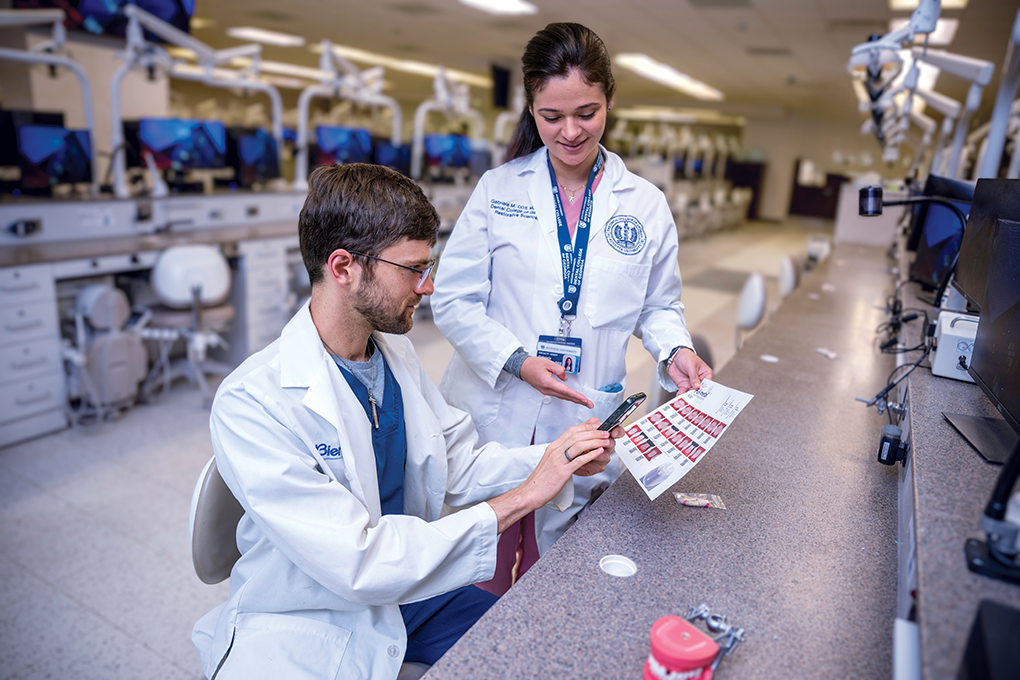
Pacheco hopes to expand the use of this tool to not only other courses but also for other faculty members and colleges to use around the country.
“I would love more faculty involved. I want this to be theirs – I don’t want this to be mine. I want them to be using this for students in other applications,” he said. “I can show them how to take the pictures and scans so they can create their own and benefit even more students. That’s my goal.”
He’s already gotten great feedback from DCG faculty, who strongly believe in the work he’s doing and encourage him to keep pushing forward.
“Many students struggle to visualize the three-dimensional aspects of what we are seeking to teach them,” said Rodway Mackert, DMD, PhD, a professor emeritus at DCG. “The full-metal crown preparation — the way a dentist ‘whittles down’ a tooth so that the cast metal crown can fit over it like a thimble over a fingertip — is a case in point. Dr. Pacheco’s teaching tool is a wonderful way to help students visualize not only the final goal, but each step along the way.”
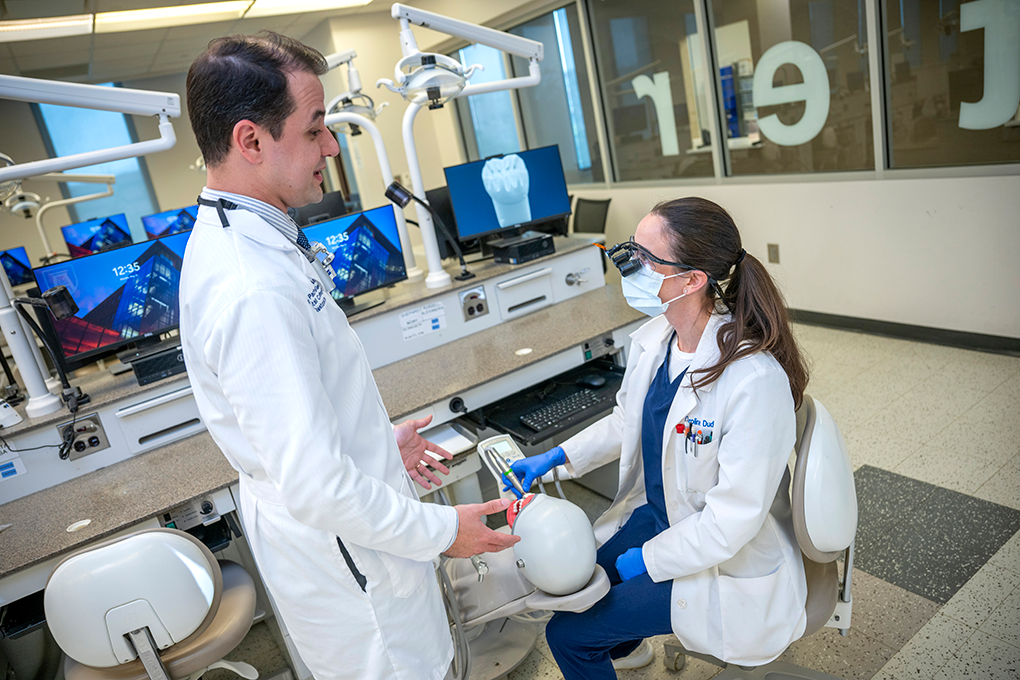
 Augusta University
Augusta University
